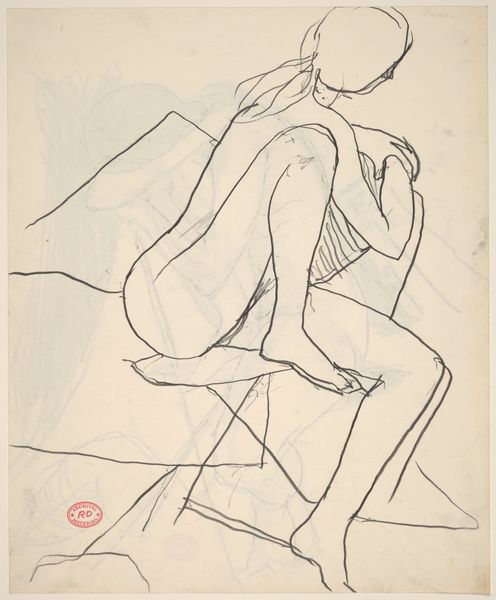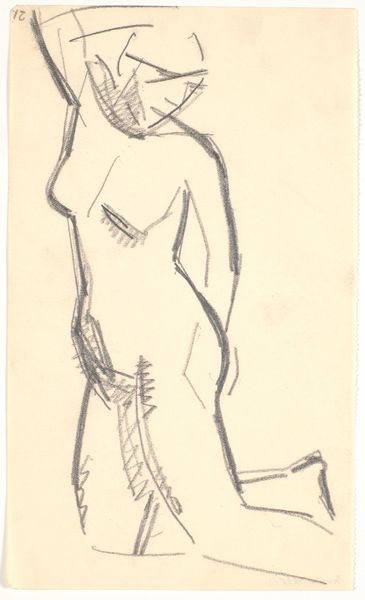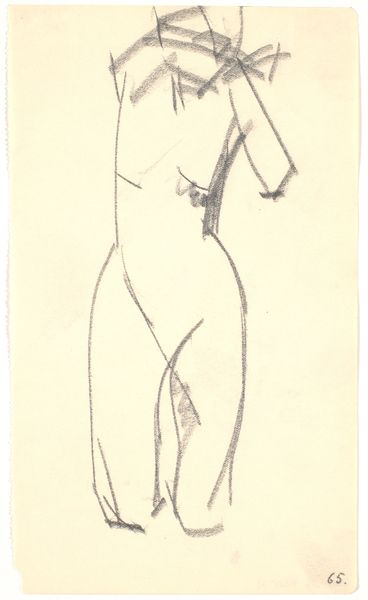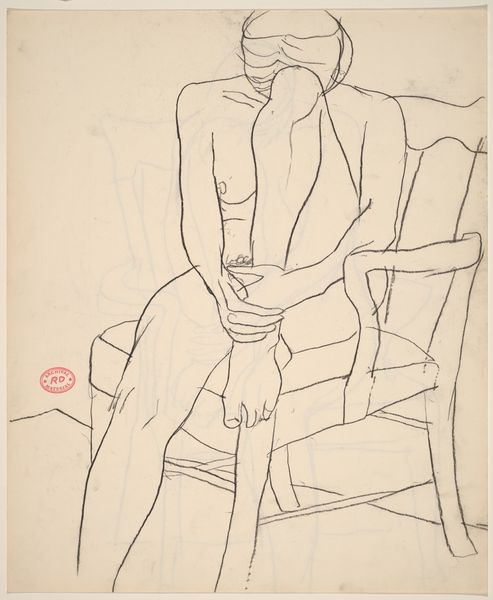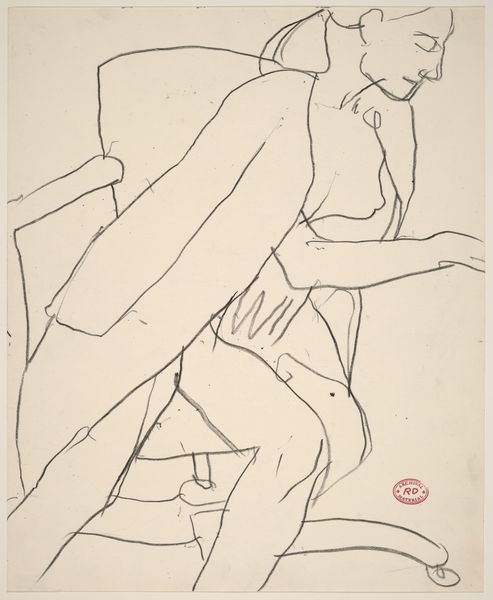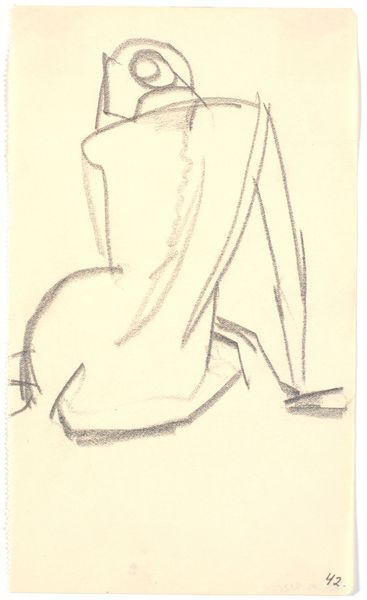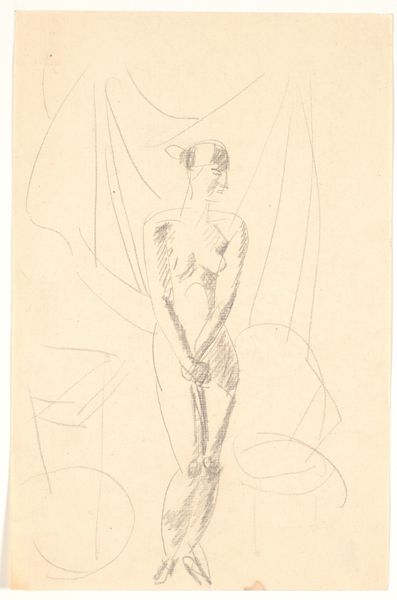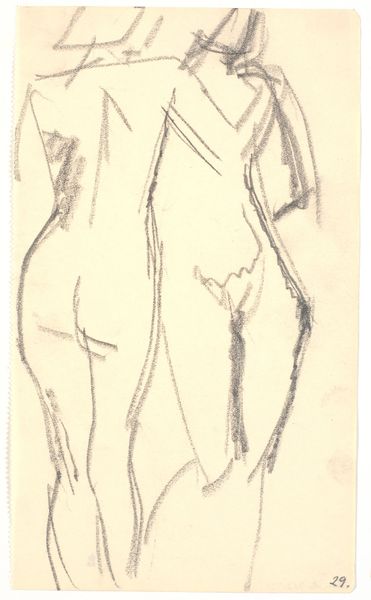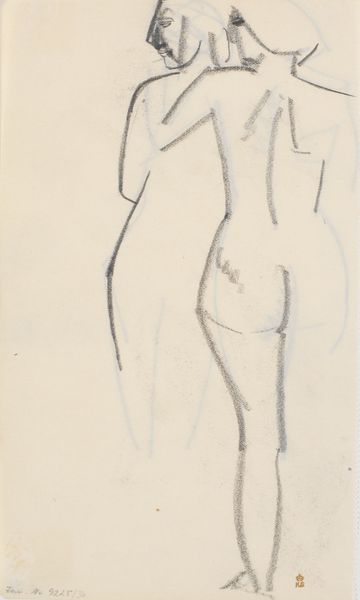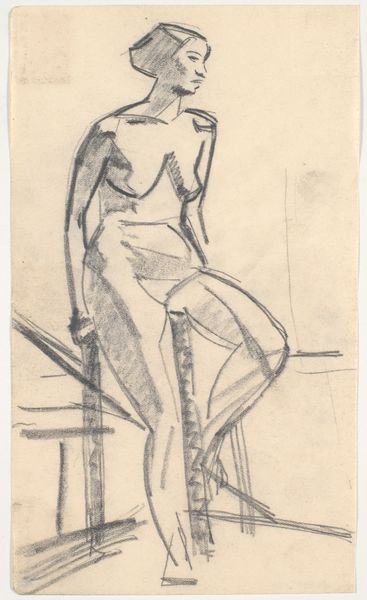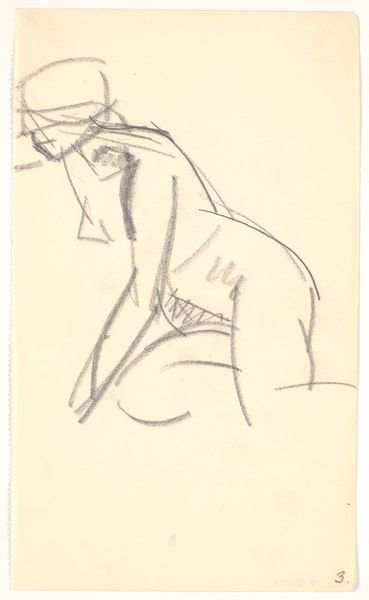
drawing, chalk, graphite
#
portrait
#
drawing
#
figuration
#
expressionism
#
chalk
#
graphite
#
nude
Copyright: Public Domain
Editor: So, this is "Weiblicher Akt," a nude female figure by Ernst Ludwig Kirchner, made around 1930 with graphite and chalk. There’s something unsettling about her pose and the stark lines. What strikes you about it? Curator: What immediately comes to mind is the social context surrounding Kirchner’s work, particularly his involvement with the art group Die Brücke and the cultural upheaval in Germany during and after World War I. This piece, even with its simple medium, speaks volumes about the changing representations of the body within art during periods of societal change. Consider how traditional academic nudes differed from expressionist depictions. How might societal anxieties play a role? Editor: That's interesting! It definitely isn't an idealized form; it's almost angular and quite raw. How do you think galleries and museums influenced this shift in depicting the human figure, especially the female form? Curator: Museums, increasingly showcasing modern works, began challenging conventional notions of beauty and representation. Galleries and other institutions provided spaces where artists could subvert classical artistic norms and engage in political statements, promoting a discourse on cultural norms. To what extent do you feel such a drawing can perform a kind of visual critique? Editor: It’s almost like a rejection of traditional art, a kind of artistic rebellion showcased in a gallery. It is quite impactful and challenging in its simplicity. Curator: Exactly. By placing such art in the public sphere, galleries essentially participated in shaping societal perception of art's purpose itself. Something that perhaps we take for granted today. Editor: This has really broadened my understanding of Kirchner's art. I used to think of it in a purely aesthetic way, but now I see the social and cultural forces at play. Curator: Indeed. Viewing art in the museum means not just understanding artistic creation, but also being aware of the surrounding historical moment in time and institutional forces involved in assigning public value.
Comments
No comments
Be the first to comment and join the conversation on the ultimate creative platform.
